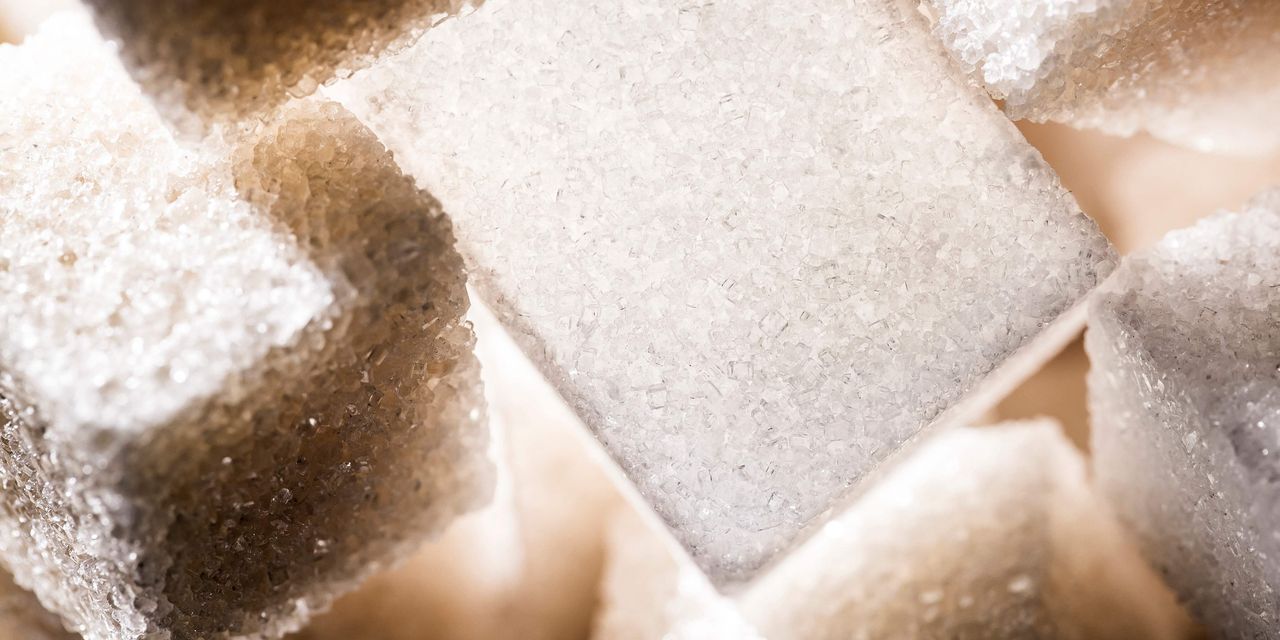Sugar prices have climbed by nearly 40% so far this year, on track to mark their best yearly performance in 14 years, with U.S. and global supplies expected to remain tight.
Sugar has been driven higher by “tight supply and demand, both domestically and globally,” said Darin Newsom, Barchart senior market analyst.
Sugar is part of the so-called “softs” sector, which refers to commodities that are grown, not mined. The sector itself has seen a “relay race to new highs over the last couple of years,” said Newsom, with lumber
LB00,
orange juice
OJ00,
and others having “taken turns, with sugar running with the baton now.”
The most-active March sugar futures contract
SB00,
settled at 27.72 cents a pound on the ICE Futures U.S. exchange on Sept. 19 — the highest since Oct. 18, 2011, according to Dow Jones Market Data. Prices have held ground close that level, settling at 27.53 cents on Tuesday.
“Sugar has rallied strongly over the past year because of an imbalance in supply and demand,” Sal Gilbertie, chief investment officer at Teucrium Trading, told MarketWatch.
Sugar futures traded on the ICE Futures U.S. exchange have gained 37% year to date, which would mark its best year since 2009, according to Dow Jones Market Data.
Some market estimates showed the world produced less sugar than it used, and “many private analysts are saying the same is expected to happen this year,” said Gilbertie.
A May report on Czapp, the market portal for sugar trader Czarnikow, estimated global sugar production at 173.9 million metric tons and global sugar consumption at 176.9 million metric tons for the 2022/2023 crop year.
It forecasts 2023/2024 global sugar production at 178.8 million metric tons, which it says would be the second largest on record after the 2017/2018 crop season. It also forecasts global consumption at 178.9 million metric tons, which it says would be the highest on record.
Official U.S. data, however, show modest surpluses for last year as well as next year, but with supplies still expected to be tight.
Total global sugar production was estimated at 177.3 million metric tons for the 2022/2023 crop year, versus consumption of 176.0 million metric tons, according to a May report from the U.S. Department of Agriculture.
For 2023/2024, it forecasts production at 187.9 million metric tons and consumption at 180.0 million metric tons.
Consumption is expected to rise to a new record due to growth in markets such as India and Pakistan, the USDA said in its report.
The USDA’s May report projected a surplus in global supplies for the 2023/2024 crop year, but weather and production issues in India and Thailand have probably changed the USDA’s perceptions to match private analysts, said Gilbertie.
The market won’t get updated forecasts from the government agency until its next report in November.
“Unfavorable weather is leading to production concerns,” said Jake Hanley, managing director and senior portfolio strategist at Teucrium. Thailand, which is the world second largest exporter behind Brazil, is expected to see a production decline of around 30%.
Also, India has extended its export restrictions in efforts to keep a lid on domestic prices, he said, while a below normal monsoon season, with rainfall some 6% below long-term averages, is expected to have a “significant impact on cane production.”
For the U.S., the USDA pegged ending stocks of sugar, the amount of sugar at the end of a marketing year, at 1.557 million short tons for 2023/2024, down from last year’s 1.977 million short tons.
If realized, the 1.557 million short tons would be the smallest U.S. ending stocks since the 20102011 marketing year, said Barchart’s Newsom.
Brazil, meanwhile, was in a multi-year La Niña drought until El Niño moved in and helped improve the global sugar supply and demand situation, Newsom said.
Read: El Niño has potential to disrupt the outlook for sugar, rice and other consumer staples
However, this past winter in Brazil, which is from June to August, as well as early spring from September to October, have seen parts of that country fall back into a drought situation, he said.
As an agricultural market, sugar is a “weather derivative so a change in Brazil’s weather could quickly change the structure of the market,” said Newsom.
Overall, the uptrend in sugar has “some staying power,” in part given how strong the inverted forward curve is, said Newsom.
A market’s forward curve is a line chart showing prices of all futures contracts for a specific market and if it’s inverted, that means nearby contracts are higher priced than deferred contracts, he explained.
That indicates supply and demand is tight and “commercial traders are pushing nearby futures to find supplies to meet demand,” said Newsom.
Read the full article here












